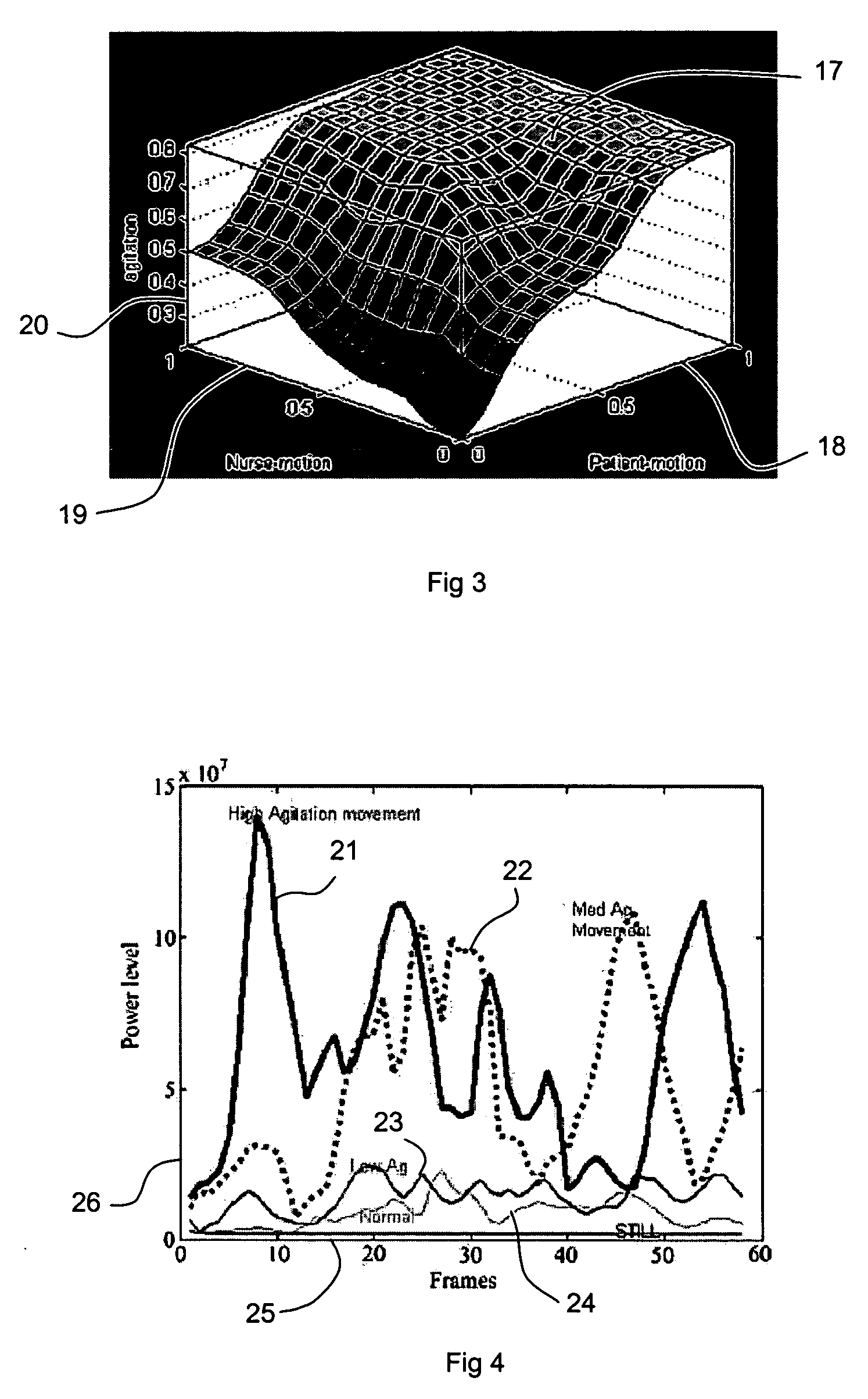Method and system for assaying agitation
- Summary
- Abstract
- Description
- Claims
- Application Information
AI Technical Summary
Benefits of technology
Problems solved by technology
Method used
Image
Examples
Embodiment Construction
[0133] The present invention provides an objective method and system of assaying agitation in an individual, particularly critical care patients such as those in ICU. The quantification of agitation may be derived from automated monitoring of either at least one metric of an individual's autonomic nervous system (ANS) and / or physical movement of one or more defined regions of interest (ROI) of the individual's body. Although direct benefits may be gained from the use of both monitoring methods, both are considered individually herein in more detail.
[0134] Patient movement currently plays at least the primary, if not entire, role in the assessment of patient agitation when the patient is reasonably sedated [Weinert at al 2001]. This dominant role is reflected in a study carried out to investigate nurses' assessment of movement and agitation in sedated patients [Foster et al 2001]. Hence, current agitation assessment can be dominated by the assessment of excess or undesirable patient...
PUM
 Login to View More
Login to View More Abstract
Description
Claims
Application Information
 Login to View More
Login to View More - R&D
- Intellectual Property
- Life Sciences
- Materials
- Tech Scout
- Unparalleled Data Quality
- Higher Quality Content
- 60% Fewer Hallucinations
Browse by: Latest US Patents, China's latest patents, Technical Efficacy Thesaurus, Application Domain, Technology Topic, Popular Technical Reports.
© 2025 PatSnap. All rights reserved.Legal|Privacy policy|Modern Slavery Act Transparency Statement|Sitemap|About US| Contact US: help@patsnap.com



